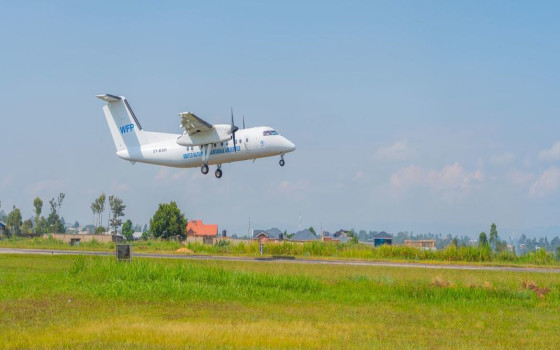
UN: UNHAS Lost Half of Funding, Yet Continues to Work in More Than Twenty Countries

- Europe and Arabs
- Sunday , 28 September 2025 4:7 AM GMT
New York: Europe and the Arabs
In one of the main halls, where the United Nations headquarters is bustling with events and meetings, banners adorn one wall, promoting the United Nations Humanitarian Air Service (UNHAS), which serves as "an air bridge that ensures aid workers and assistance reach those in need."
This is what Headley Tah, Director of External Relations for the service, known by the acronym UNHAS and managed by the World Food Programme, said in statements published in the UN's daily news bulletin.
He added: "Where roads are nonexistent and commercial options are lacking, UNHAS steps in to ensure that humanitarian workers continue to connect with those most in need."
The UN official cited the example of South Sudan, where there are approximately 20,000 kilometers of roads, but only 2% of them are paved, noting that "reaching those in need is almost impossible without air transport."
This is where UNHAS comes in, bridging this gap and ensuring that life-saving aid continues to reach people, Tah emphasized. Serving 600 Organizations
The UN official noted that UNHAS serves more than 600 organizations, providing a shared service rather than each organization managing its own costly air operations. This reinforces WFP's position as a giant supply chain serving the broader humanitarian community.
He added that the program transports approximately two million metric tons of supplies annually, saying that this means "we are able to enable other organizations to focus more on their programmatic mandates while we manage the supply chain on their behalf, while ensuring efficiency gains."
Impact of Declining Funding
In this context, the Head of External Relations for UNHAS explained that it is essential to emphasize the urgent need for political and financial support for this service, especially since they have pledged to leave no one behind. He reported that UNHAS had lost approximately 50% of its funding compared to last year, adding: "We have reduced the number of aircraft by 22%, renegotiated contracts with our partners, reduced the frequency of flights, and in some areas, completely stopped flying to certain destinations."
He noted that they had reduced costs by approximately 20%, which impacts the air service's response to humanitarian needs.
However, he confirmed that the service continues to operate, adding: "We are doing more with fewer resources to serve the humanitarian community in 21 countries."












No Comments Found